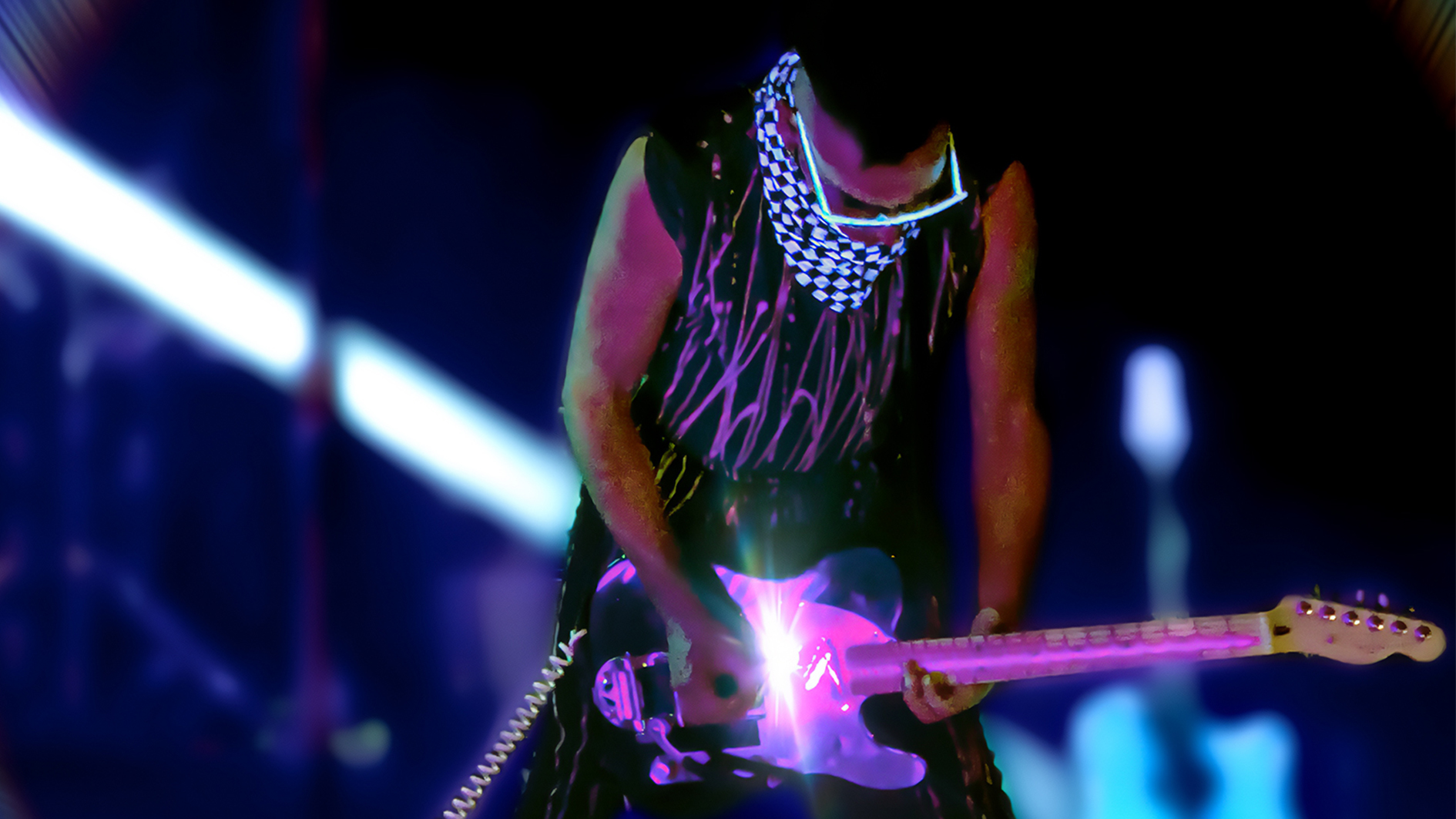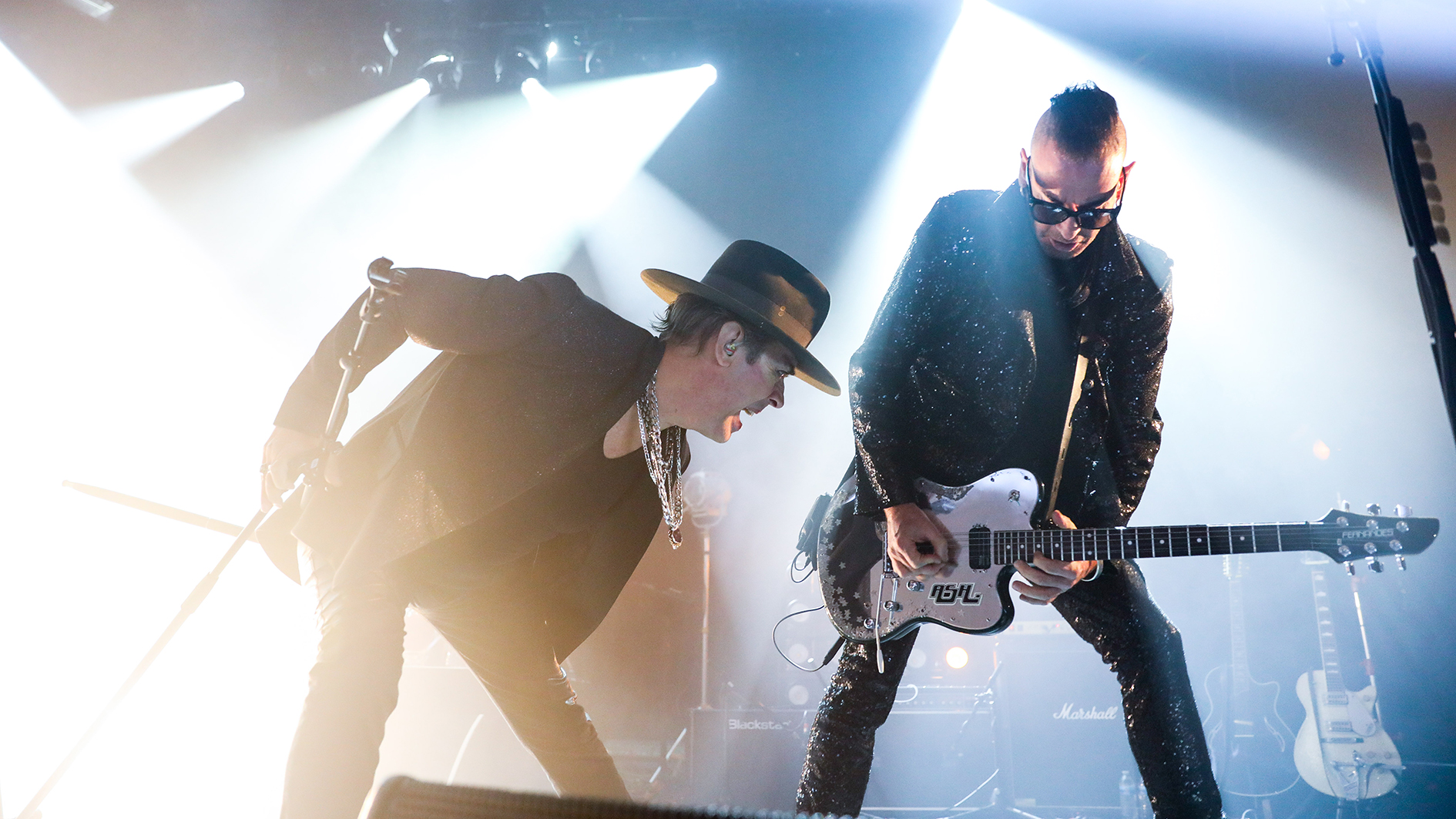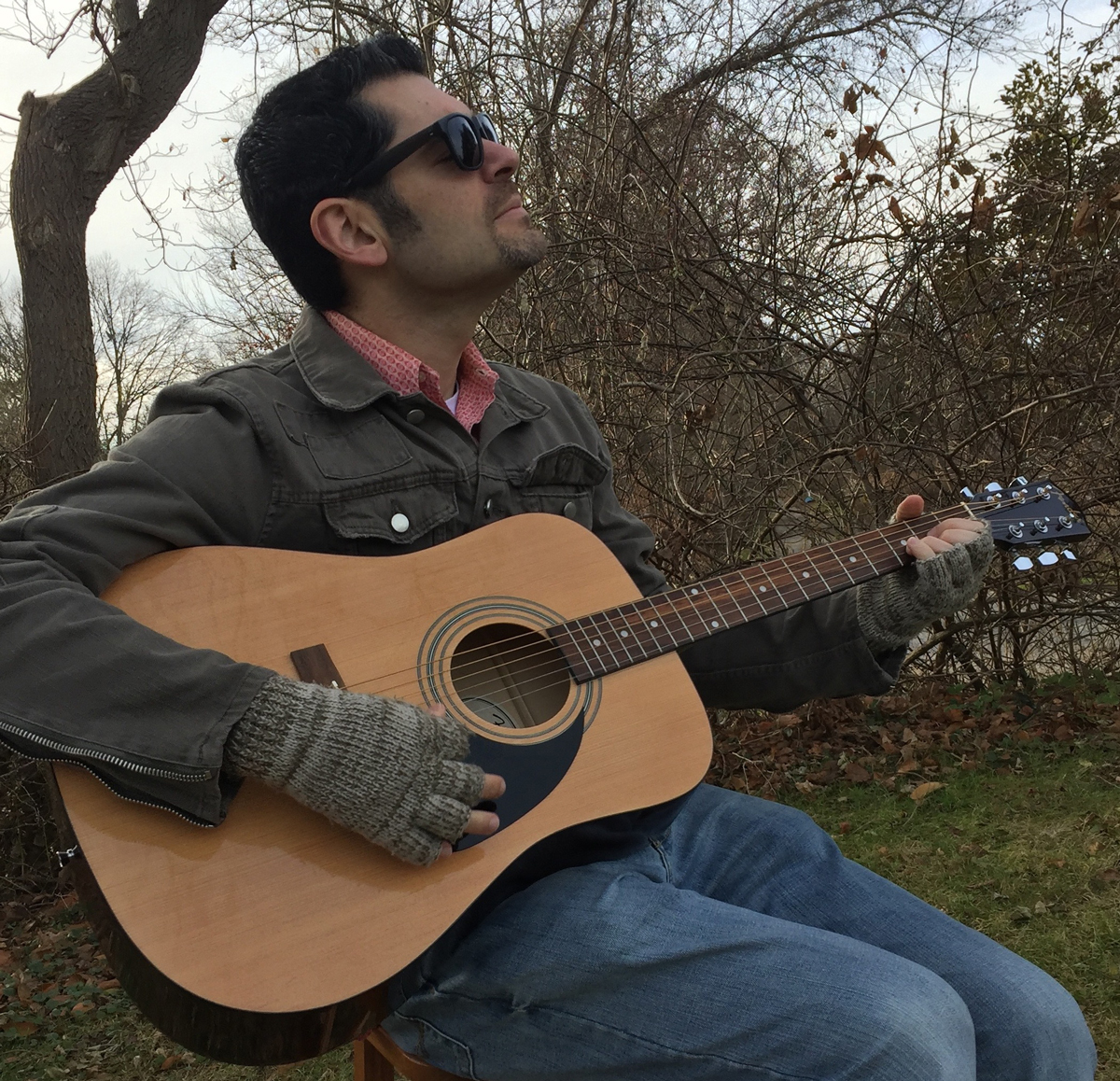Bauhaus' Daniel Ash: “I don’t really pick out guitar players in bands – I listen to something for the whole package”
The goth-rock trailblazer goes in-depth on his guitar rigs and unusual writing approaches for Bauhaus tracks old and new

Daniel Ash created a guitar legacy all his own. His mood-shifting, atmospheric playing style, as heard in his early Telecaster-driven work with Bauhaus, served as an obvious influence on subsequent bands including Jane’s Addiction, The Smashing Pumpkins, and Soundgarden.
In 2022, he is uniting once more with his Bauhaus bandmates – singer Peter Murphy, bassist David J, and drummer Kevin Haskins – for a world tour and new track, Drink the New Wine.
In addition to Bauhaus – with whom he’s played with since 1978, and co-composed such classic tunes as Bela Lugosi’s Dead, Dark Entries and Double Dare – he has also played with the likes of Love and Rockets (who scored a global hit with So Alive in 1989), as well as Tones on Tail, the Bubblemen, and Poptone.
Ash spoke with Guitar World shortly before the launch of the Bauhaus tour to discuss the unorthodox way the band created their latest material, his modern-day guitar setup and what he utilized for the recording of Bauhaus’ best-known song, plus a new project in the works…
Bauhaus has been hugely influential on a wealth of indie rock bands. Do you hear your influence on any guitar players today?
“No, I don’t. If anything, I try and simplify stuff and I try to sort of ‘howl’ on one or two notes rather than [play] six-million notes. I’m trying to think of anybody who has that style.
“Maybe the Yeah Yeah Yeahs – there were some similarities there. That guy [Nick Zinner] likes to use the bottom E string a hell of a lot. I don’t hear many diminished 7ths in there. There’s not many jazz chords knocking about – the same as I do.”
Get The Pick Newsletter
All the latest guitar news, interviews, lessons, reviews, deals and more, direct to your inbox!
Do any new guitarists inspire you?
“I don’t really follow guitarists, to be honest. Within bands, I don’t really pick out guitar players. I listen to something for the whole package – everything from the hi-hat to the lead vocal, and everything in between.
“I’m a huge fan of dance music, for example. There aren’t any guitars in it. But I got exposed to that in the early ‘90s. I didn’t get it way back, and then somebody one night said, ‘No, no. Forget drinking beer, forget wine. Try one of these.’ It was a rhubarb and custard – a yellow and black pill. And it was ecstasy.
I’ve been using the cut-up newspaper technique regularly for lyrics. All you need is a good headline
“And from that night on, the penny dropped and I got completely turned on to techno and dance music. My brain switched and I understood it completely – and have been in love with it ever since.”
The new Bauhaus song, Drink the New Wine, was written using the Surrealist Exquisite Corpse device.
“Yeah. We’ve used that before – when we very first started. This was when we had some time off because of Covid.
“We had a drumbeat that Kevin put together – that was the whole thing that held it all together. I think we also said it was in a particular key – probably A, G or E.
“But those were the guidelines, so we would have one minute and eight seconds each to record our parts, not knowing what the next person would do. Everything was by chance, including who came first, second, third, and fourth, on how the song would be put together.
“So, the way the coins were thrown, I came first, then Kevin’s part, then David’s, then Peter’s.”

What other avant-garde composition techniques have the band employed?
“We’ve used Eno Cards [also known as Oblique Strategies]. I know David had those first, and then I actually went and bought a pack.
“But I’ve been using the cut-up thing forever – starting with the first song I ever really wrote, which was Slice of Life by Bauhaus. Using the cut-up, I remember I got that line, 'slice of life', from a magazine I saw. It was like a fanzine thing in Greenwich Village in New York.
“I’ve been using that cut-up regularly ever since for lyrics. All you need is a good headline. I use the National Enquirer a lot – because you get the best headlines from the National Enquirer. I cut them all out.
“This goes back to seeing David Bowie do that in the documentary, Cracked Actor, and he was talking about that cut-up idea. Which was also something William Burroughs used way back.”
What new guitar gear has inspired you?
“I’ve just gone back to using a Telecaster again. That wonderful company, Fender, gave me a really nice, top-of-the-line Telecaster. And that’s it. I don’t use the Fernandes [Native Pro] anymore.
“As a kid, the first guitar I got was a Tele – it was a ’72. And now I’ve got a 2012. But I got it all mirrored – the head and the body itself. And I’ve got a Fender whammy bar on it. And I did put a Sustainer unit in it for about 1,500 bucks. That’s all I need.
I actually own Hendrix’s old wah pedal – or so I’ve been told it’s Hendrix’s pedal. Somebody opened it up, looked at the wiring, and the wiring is definitely not stock
“I just use that with my Boss pedals [which include a DS-1 Distortion, CH-1 Super Chorus, two echoes, BF-3 Flanger, TR-2 Tremolo, and TU-3 Chromatic Tuner] – which I’ve used forever. I do have an old ‘70s Carlsbro Flanger – I haven’t found any new pedals that come close to the flange on that.
“Live, I use the [Dunlop Cry Baby] wah pedal that everybody uses. I actually own Hendrix’s old wah pedal – or so I’ve been told it’s Hendrix’s pedal. Somebody opened it up, looked at the wiring, and the wiring is definitely not stock. I don’t know if I have any way of proving it’s his pedal, but it definitely is more extreme than any [other] wah pedal. But I don’t use that on the road – I just use that in the studio.
“And I’m just going through Marshall gear now [Daniel is unsure of the model, but says he plans on playing through a JCM800 for the upcoming Bauhaus tour]. I used to use the old HH amp tops, and I can get that with the Marshall. It’s all about the Tele. With the Telecaster, you get that cutting sound. And that’s it – that’s all I need.
“There’s another little setup I have – I got an old Silvertone guitar. It’s so crude – the one with the lipstick pickups. It’s made in the 1950s out of what they used for kitchen tops. Black and white, with lipstick pickups.
“I use one of those combined with a little seven-inch speaker that Hiwatt gave me years ago. And the sound of those two together… There’s a really good example – there’s this song I did, Flame On, and that guitar is coming through that amp.
“And I’ve got this beautiful Taylor guitar that I got for $1,700 secondhand. It must have been a $3,000 guitar. It’s 12-string, hollow-bodied, but very thin. I don’t know what model it is, but I saw it at the Guitar Center in Oxnard about five years ago. It’s black and white and it’s gorgeous.
“I’ll never go back to playing another 12-string acoustic again, because this thing plays like a six-string. It’s so easy to play. And I just put that straight through a Roland Jazz Chorus.”
What was your setup when Bauhaus recorded Bela Lugosi’s Dead?
“That was an HH. It was two 12-inch speakers in a HH combo. It’s called an IC100-S. If you look at the old pictures of the late ‘70s, all the punk bands [in the UK] had HH gear – because it was cheap. We couldn’t afford anything else.
“It was piercingly sharp. And I used the HH echo unit in the studio, as well – when we recorded [Bela Lugosi's Dead].
“And here’s an interesting little side note that I never knew until recently – Marc Bolan of T. Rex used HH amp tops. I think the amp he used was a Vamp – because that’s on the cover of Electric Warrior. But the amp top he used was actually an HH.
“[I also used] a 1972 Fender Telecaster [which Daniel says he ‘swapped for a saxophone’]. It was white, and as soon as I got ahold of it, I took it apart, spray painted it black, and put it back together again.”
Which Bauhaus song are you most proud of guitar-wise?
“Top of the list, I’m amazed that I played In the Flat Field. I don’t know where that came from. I remember playing that in the studio and I was in a room on my own, playing it.
“I remember there were a few girls in the control room, and I think I was trying to impress them. Because I played that pretty damn good – and I think I was inspired by a few girls that were hanging around. I think I was trying to show off.”
What’s your favorite solo by another guitarist?
“My all-time favorite is the Mick Ronson solo at the end of Moonage Daydream [on David Bowie’s The Rise and Fall of Ziggy Stardust and the Spiders from Mars]. [It] still sends me to heaven. Simple, but every note counts. Go check it out… loud!”
What’s on the horizon for you?
“Obviously, we’re doing the Bauhaus thing all through this year. [There's also] something I started out before Covid and before the whole Bauhaus thing. It’s a very interesting project – it’s called Ashes and Diamonds. It’s with the bass player from Sade, Paul Denman, and the drummer from [Public Image Ltd], Bruce Smith.
We don’t sound like a bunch of 60-year olds; we sound like a bunch of 20-year-olds. We’re very excited about it
“Me and Paul, we’ve got the same birthday in the same year – within like 48 hours of each other – so a couple of Leos, we completely get each other and get on like a house on fire, thank God. And Bruce is a Sagittarius – I’m sounding like a hippie – so we’ve got three fire signs in the same band. We all get on, we all understand each other.
“And we’ve basically done an album. We started it in about 2018 I think, and we started working apart for the last two or three songs when Covid hit – working separately – because Bruce is on the East Coast and Paul is in England, and I’m in California.
“We want to tour it and everything, but obviously that’s going to be put on hold until next year or the end of this year, at least. We spent some real time on it – crafting the songs.
“We don’t sound like a bunch of 60-year olds; we sound like a bunch of 20-year-olds on it. We’re very excited about it.”
- Bauhaus's new single Drink the New Wine is out now.
Greg is a contributing writer at Guitar World. He has written for other outlets over the years, and has been lucky to interview some of his favorite all-time guitarists and bassists: Tony Iommi, Ace Frehley, Adrian Belew, Andy Summers, East Bay Ray, Billy Corgan, Alex Lifeson, Geddy Lee, Les Claypool, and Mike Watt, among others (and even took lessons from John Petrucci back in the summer of ’91!). He is the author of such books as Grunge Is Dead: The Oral History of Seattle Rock Music, Shredders: The Oral History of Speed Guitar (And More) and Touched by Magic: The Tommy Bolin Story.
“I was in a frenzy about it being trapped and burnt up. I knew I'd never be able to replace it”: After being pulled from the wreckage of a car crash, John Sykes ran back to his burning vehicle to save his beloved '76 Les Paul
“A virtuoso beyond virtuosos”: Matteo Mancuso has become one of the hottest guitar talents on the planet – now he’s finally announced his first headline US tour












